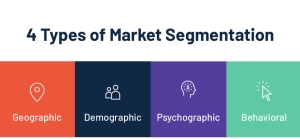It’s almost Halloween so here’s a SCARY statistic:
“We put the customer first!”
You’ve definitely heard this phrase before — and probably from more than one company. This statement is a foundational promise in countless mission statements, website headlines, and choruses of customer service teams everywhere.
Most businesses are well-intentioned when they say they are “customer first,” but it’s time to do more than just say it.
If you want to truly build your business around your customers, there are some simple steps you can take to start. Try surveying your customers, creating a customer code, or researching how other companies have successfully grown with a customer-first mindset.
What Does the Modern Buyer Want?
People today are clearly changing, but what do these empowered consumers want? We asked a series of questions to understand what they look for when evaluating products.
This one may be obvious, but 95% of respondents do research online when they have a need for a new product or service. We’ve all known this for a while, but what exactly are consumers looking for when they conduct this research?
Top 5 Needs During Online Research in 2020
- Product information (demos / explainers) (52%)
- Reviews and social proof from users like them (44%)
- Discounts and deals (42%)
- Customer examples / Case studies (33%)
- Educational content / strategy / best practices (32%)
People are clearly on the hunt for specific information about products (52%). They want to understand what something does when they buy it. They also are price conscious and (42%) on the hunt for discounts and deals.
Right person – Right message – Right time
Reaching the right person with the right message at the right time has long been the holy grail of marketing. The technology and data is tantalizingly close, and yet context and intent remain elusive. Personalized marketing is still wasted if it hits the wrong context and intent.
Here’s how Google framed the opportunity recently:
“Every day, three billion people around the world have dozens of moments that matter to them and their lives. These moments create billions of ‘signals’, which not only include context e.g. where someone is, what device they are using or the time of day, but also intent: what someone wants or needs at that moment.
“This combination of context and intent-driven signals is a goldmine for marketers, providing more opportunities to be relevant and connect with consumers in more meaningful ways than ever before.”
The Solution to Avoiding These Pitfalls
While some of these segmentation methods can be a nice jumping-off point, there are two approaches that have been proven to add much greater business value. They are called behavioral and attitudinal, or psychographic, segmentation.
Behavorial Segmentation
Behavioral segmentation buckets customers based on how they act. What are they doing on your website? What devices are they using? When are they engaging with your brand? Did they start a checkout flow for a subscription?
In the past it was hard to collect this data, but now it is incredibly easy! There are hundreds of software vendors out there that empower you to track the behavior of your audience and customers. And data science is so powerful now, that to build a predictive model (e.g., who is likely to buy/renew/upgrade based on their actions) costs a fraction of what it did even just five years ago.
With our publishing clients, we’ve seen anywhere from a 2-5X increase in online conversion rates when predictive models, based on behavioral segmentation, are deployed to deliver the right offer to the right person at the right time. It’s like free money. You already have the data, why not put it to use in acquisition, retention, and upselling efforts?
Attitudinal Segmentation
As for attitudinal segments, this is hands-down the most powerful segmentation method. It allows you to really understand the emotional reasons behind why someone buys or takes any other action with your business, and it leads to substantial business results. We’ve seen over 10X increase in leads, 70% decrease in customer acquisition costs, and 50% reduction in sales cycle time when attitudinal segments are put into play.
The historical problem with attitudinal segments was they were not very actionable. You could learn from market research that the “highly-technical, analytical mind” was the best target for your publication or membership, but it would be relatively hard to know if someone coming to your website fit that mindset, unless you somehow asked them point-blank.
Based on the types of content your audience is consuming, you can put them into attitudinal segments. That makes this segmentation method extremely actionable. As content creators, you’re sitting on a veritable gold mine.
In an ideal world you can have a multidimensional segmentation that incorporates variables across demographics, geography, behaviors, and attitudes. That’s where the real magic happens.
How to Activate a Segmentation Once You Have One
All this is intellectually stimulating, but so what? Now that you have robust segments, how do you actually make money on them?
The key is to quantify the value of each of your segments, then build a unique go-to-market strategy for each of your three to five highest-value segments.
Such a plan should include:
- Acquisition efforts. What lead magnets are most relevant? What media channels are most efficient?
- Lead-nurturing efforts. What content is most relevant to the segment? How can you best “show not tell” your value proposition by giving prospects a taste of what you have to offer without being overly “salesy?”
- Conversion. What introductory offer makes the most sense? When is the best time to make that offer?
- Retention. What does the experience need to look like to delight this segment based on their unique needs and wants, both emotionally and tangibly?
- Upsell. What else can you offer the segment that solves a real pain point for them?
With budgets being even tighter these days, there is no room for ‘guessing’. Let Bullseye Marketing take the guess-work out of the equation.
B – Relevant / B – Engaged / B – Connected

 317-289-4965
317-289-4965